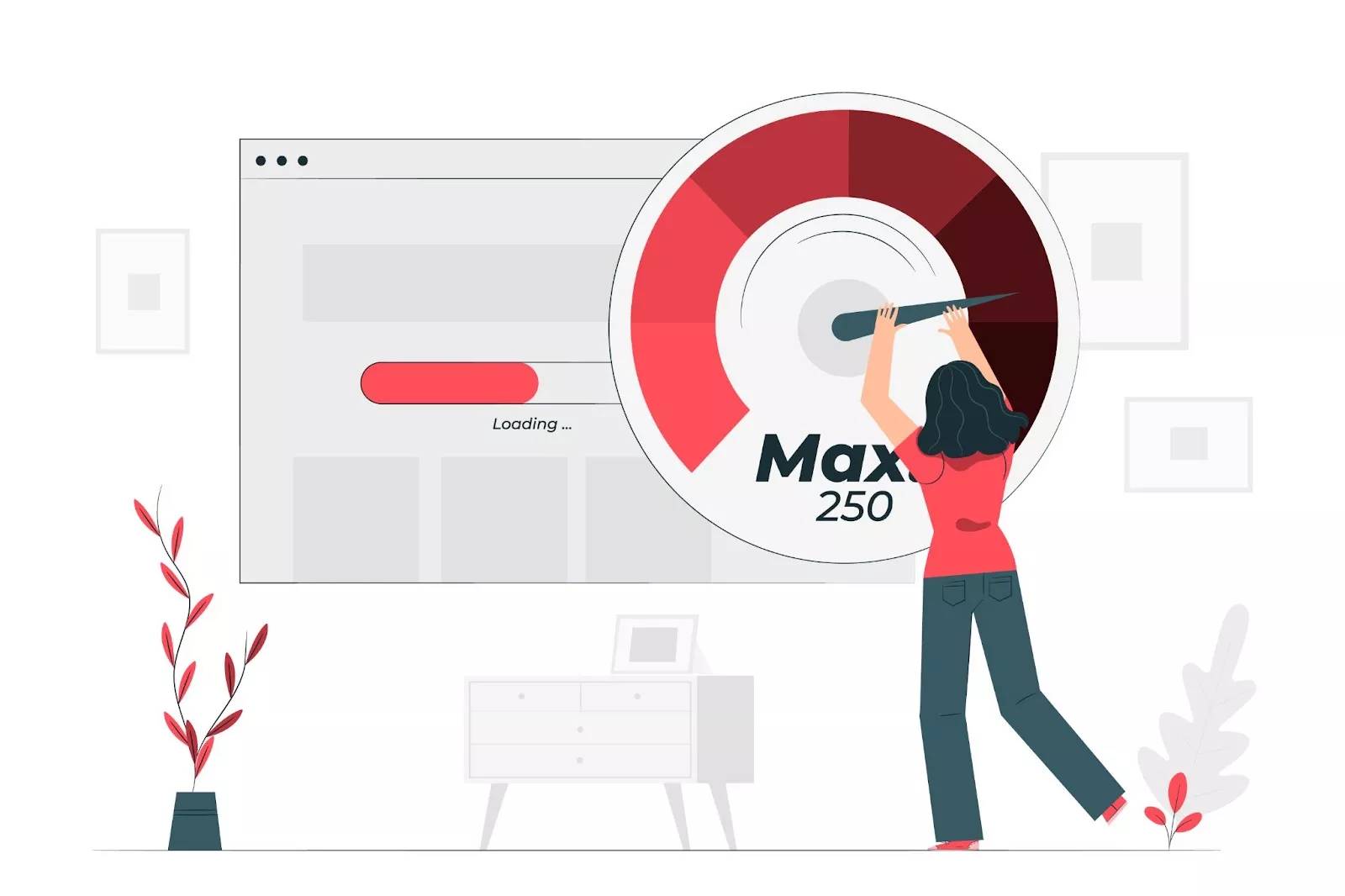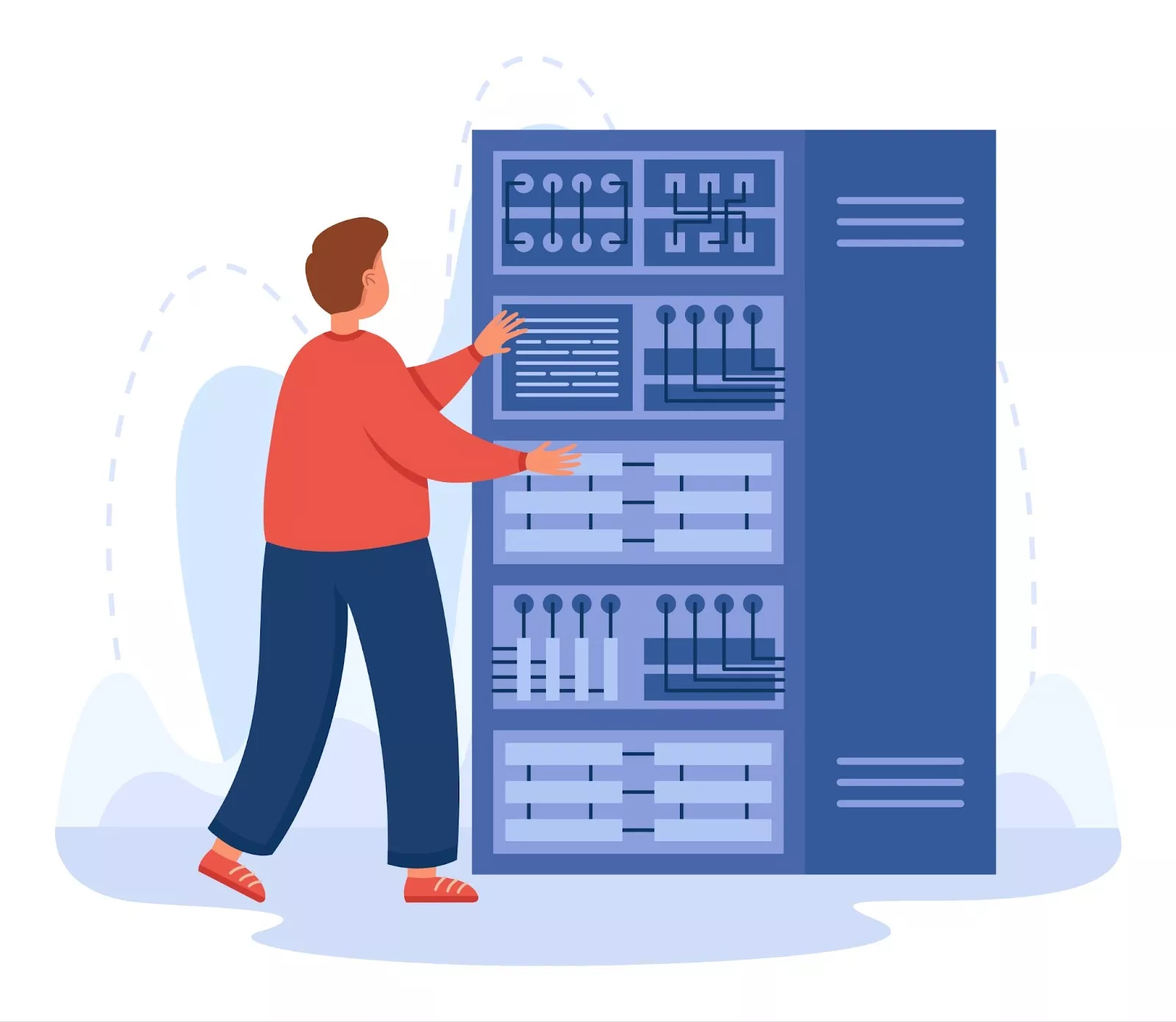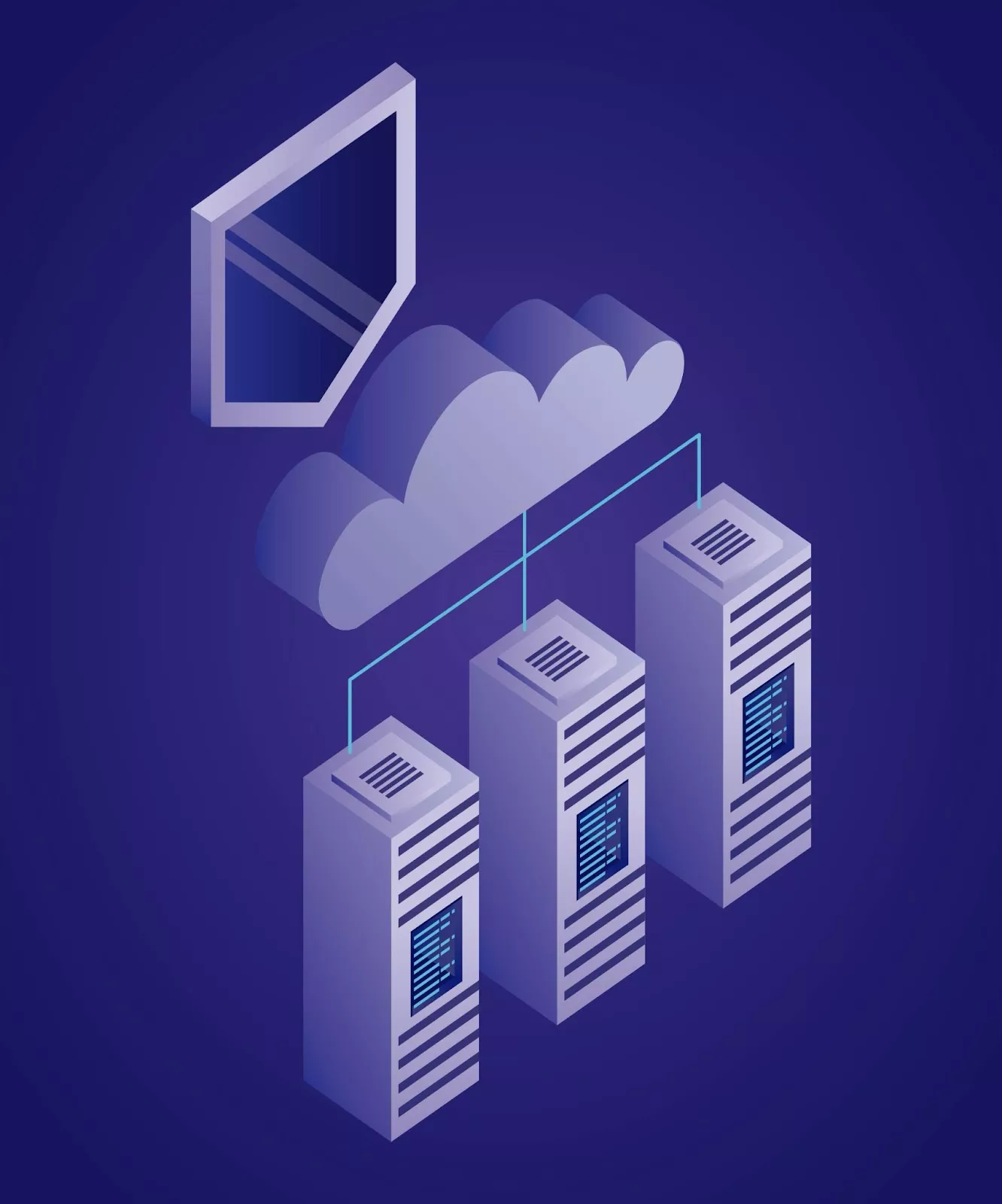Imagine your website as a bustling online storefront. Foot traffic surges during a sale, and every millisecond counts—too few checkout counters, and customers clog the aisles; too many, and you’re left paying for idle staff. Your web server works much the same way. Striking the perfect balance between capacity and cost ensures visitors glide through your pages at lightning speed, without your wallet feeling the pinch.
In this deep-dive, we’ll unpack:
- What a web server really is (beyond the jargon)
- The five pillars of server function that keep your site running
- How to measure your specific needs so you never underbuild—or overbuild—your digital infrastructure
Buckle up: by the end, you’ll know exactly how to architect a server setup that’s as lean as it is powerful.
What is a Web Server And What Are Its Functions
A web server is a hardware or software system that stores, processes, and serves website content to users over the internet. It plays a crucial role in communicating between a user’s website and the web browser they are accessing.
When you type a website’s URL into your browser’s address bar and search it up, the browser hits a request to the web server that is hosting the website, asking for the necessary files and data.
Essential functions of a web server include:
Handling HTTP Requests: Web servers primarily use the Hypertext Transfer Protocol (HTTP) to communicate with web browsers. They receive and respond to HTTP requests from clients (web browsers) by providing the requested resources, such as HTML pages, images, stylesheets, and other multimedia content.
Processing Dynamic Content: Besides serving static files, many web servers can execute server-side scripts to generate dynamic content on the fly. This allows websites to display personalized and interactive content based on user inputs or other factors.
Managing Security: Web servers often include security features to protect against online threats, such as DDoS attacks, unauthorized access, and data breaches. They may implement protocols like HTTPS to encrypt data transmitted between the server and the client for improved security.
Load Balancing: In scenarios where a website experiences high traffic or has multiple servers, load balancing may be employed. Load balancers distribute incoming requests among multiple servers to ensure optimal performance, scalability, and reliability.
Logging and Monitoring: Web servers typically log information about each request they receive, helping administrators track website activity, troubleshoot issues, and monitor performance. This data can be valuable for analytics and debugging purposes.
Standard web server software includes Apache, Nginx, Microsoft Internet Information Services (IIS), and LiteSpeed. These servers run on various operating systems, such as Linux, Windows, and Unix-like.
The choice of a web server depends on factors like performance requirements, features, and compatibility with the web applications being hosted.
Five Pillars of Web Server Mastery
To craft the ideal server, you must understand its core responsibilities. These five pillars are the foundation of any robust hosting environment:
- Request Handling (The Usher):
Routes each visitor’s HTTP/HTTPS “ticket” to the right content. A nimble server handles thousands of simultaneous requests without a flinch. - Dynamic Content Serving (The Stagehands):
Executes scripts on the fly—pulling inventory from databases, customizing user dashboards, or generating real-time scores. The more complex the show, the more CPU and RAM you’ll need. - Security Management (The Bodyguards):
Implements SSL/TLS encryption, firewalls, and intrusion detection—guarding your data from digital pickpockets and script kiddies alike. - Load Balancing (The Traffic Cop):
Directs surging crowds across multiple servers so no single machine is overwhelmed. During flash sales or viral hits, this keeps the experience smooth. - Logging & Monitoring (The Director’s Notes):
Records every entrance, exit, and stage mishap. Access logs and error reports help you tweak performance, squash bugs, and anticipate the next big audience rush.
Why Right-Sizing Matters
- Too Small: Your site chokes under popularity. Pages spin with “loading…” icons, shoppers abandon carts, and your bounce rate skyrockets.
- Too Large: You pay for an empty theater. Idle resources eat into your IT budget, leaving less runway for marketing, development, or new features.
Your mission? Hit the sweet spot where server capacity flexes just enough to handle traffic peaks, then scales back when the crowd thins—maximizing performance without waste.
Core Components That Influence Web Server Size
The capacity of the installed components determines the size of a web server.
More excellent capacity parts expand the size of the web server, increasing its speed and potency.
Lower capacity components, on the other hand, result in a smaller web server that is less able to function effectively during periods of high demand. These are a few critical parts of a web server that affect its performance and size.
Internet Bandwidth & Speeds

For a web server to process user requests and return data, it must be online.
Your website will transfer data faster if it is on an internet server with a large bandwidth.
Your website’s bandwidth determines how much data it can deliver. Bandwidth can be compared to a straw.
You won’t be able to drink much water with a narrow straw because it has poor bandwidth. However, you can drink more water if the straw is broader (greater bandwidth).
If the internet and bandwidth are increased, your website will be able to deliver data considerably more efficiently and react to user queries much faster.
Read also: How Website Bandwidth Impacts Its Performance and User Experience?
CPU Processing Power

Every web server has a central processing unit, often called a CPU. This processor serves as your web server’s brain, enabling it to assemble all the website components swiftly.
It takes the text, images, and videos, jumbles them up, and then sends them to the user’s phone or computer so that they can view the website.
The faster and more powerful the CPU, the faster the web server can complete this task. This is crucial since it improves the speed and functionality of websites.
Dual-core, quad-core, and higher processors are more potent CPUs with several cores. By enabling your CPU to perform multiple jobs simultaneously, each core adds a distinct brain, increasing its speed.
RAM (memory)

A web server can store necessary files temporarily in memory, often known as RAM (random access memory). Memory is a rapid memory space.
RAM enables your web server to temporarily gather all the files required to display a webpage for faster access.
With more RAM, your web server can operate more quickly and effectively since it has more temporary storage for such data.
Disk space for storage

The actual storage that a computer possesses is called storage or disk space. If you have a larger storage capacity, you can store more data on your website.
Storage can be compared to a large digital closet where the server keeps the website’s files, including text, videos, and images.
A well-organized closet facilitates quicker and easier item retrieval. Comparably, a larger space enables you to store and locate goods rapidly.
Like the closet metaphor, your WordPress website is more productive if it has lots of neat storage.
Content and Databases

The size of the files served, such as images, videos, and downloadable documents, affects the server’s storage requirements and bandwidth usage. Large files may require more disk space and efficient content delivery mechanisms.
If the web server interacts with databases, the size and complexity of the databases can impact performance. More extensive databases may require more memory (RAM) and storage space.
Security Features

Web servers often have firewalls to filter outgoing and incoming traffic based on preset security rules. Implementing firewalls adds an additional layer of software, influencing the server’s overall configuration and resource usage.
Intrusion Detection Systems (IDS) monitors network or system activities for malicious behavior or policy violations. Integrating an IDS into the server’s security measures can increase its complexity and resource requirements but elevate its ability to detect and respond to security threats.
Meanwhile, using SSL/TLS certificates and encryption algorithms requires additional CPU resources. While essential for securing data in transit, it impacts the server’s processing capabilities.
Step-by-Step: How to Calculate the Web Server Size You Need

1. Estimating Disk Space
To calculate your server’s disk space requirements, consider the following components:
- Operating System Files
- Website Files (HTML, CSS, JavaScript)
- Media Content (images, videos, downloadable files)
- Databases
- Email Storage
- Control Panel Software
- Security Tools
Example Calculation:
- If each page on your site is 50 KB and you have 2,000 pages, the total page size will be 100 MB.
- Add database and email storage (e.g., 6 GB for databases, 2 GB for emails).
- Ensure that your server uses no more than 85% of available disk space. For example, if you have 1,000 GB of storage, use no more than 850 GB and leave 150 GB free for future expansion.
2. Estimating RAM Requirements
RAM is essential for website performance, especially when dealing with large databases or dynamic content. When estimating RAM requirements, consider the following:
- The operating system requirements
- The size of your database
- Expected traffic volume
- The complexity of your website’s applications
Guideline: Always allocate an additional 10–20% more RAM than the minimum requirement to handle traffic spikes.
3. Calculating Bandwidth
To calculate the required bandwidth, multiply the following factors:
- Average page size
- Average number of pages viewed per visitor
- Expected number of visitors per month
Example Calculation:
- Average page size: 25 KB
- Pages per visitor: 10
- Monthly visitors: 10,000
Bandwidth Calculation: Bandwidth = 25 KB × 10 pages × 10,000 visitors = 2,500,000 KB or 2.5 GB per month
Tip: Always add an additional 20–30% buffer to account for traffic spikes. For example, with the calculation above, you should plan for at least 3.25 GB of bandwidth per month.
Choosing the Right Hosting Type for Your Server Needs
Selecting the appropriate hosting type is a critical decision that directly impacts your website’s performance, scalability, security, and overall success. Every hosting option is tailored to meet specific requirements based on the site’s size, expected traffic, technical complexity, and budget. Let’s explore each type in detail:
1. Shared Hosting
Best Suited For: Beginners, personal blogs, and small websites with minimal traffic.
Advantages:
- Affordability: Shared hosting is the most budget-friendly option available, making it ideal for first-time website owners.
- Ease of Use: With simplified control panels and pre-installed applications, it’s extremely easy to set up and manage.
Disadvantages:
- Resource Limitations: As multiple websites share a single server’s resources (CPU, RAM, bandwidth), performance can suffer during peak traffic times.
- Security Risks: Shared environments can sometimes increase vulnerability to security breaches if neighboring sites are compromised.
2. VPS (Virtual Private Server) Hosting
Best Suited For: Growing websites, startups, and businesses needing more control without the cost of a dedicated server.
Advantages:
- Dedicated Virtual Resources: Each VPS is allocated its own slice of server resources, ensuring better stability and performance.
- Scalability: As your site grows, resources can be easily upgraded to meet demand.
- Greater Control: You get root access, allowing custom configurations and software installations.
Disadvantages:
- Technical Knowledge Required: Managing a VPS may require understanding of server administration, including security patches and performance optimizations.
3. Dedicated Server Hosting
Best Suited For: Large enterprises, e-commerce giants, or mission-critical applications with very high traffic.
Advantages:
- Complete Control: You gain full authority over server configurations, security settings, and software environments.
- Unparalleled Performance: Dedicated resources mean faster load times, increased reliability, and enhanced user experiences.
Disadvantages:
- High Cost: Dedicated servers are significantly more expensive compared to shared or VPS solutions.
- Maintenance Responsibilities: You are fully responsible for managing, securing, and updating the server unless opting for managed services.
4. Cloud Hosting
Best Suited For: Websites expecting rapid growth, fluctuating traffic, or those requiring high availability.
Advantages:
- Elastic Scalability: Cloud hosting can instantly scale resources up or down based on traffic demands.
- Pay-As-You-Go: Only pay for the resources you consume, optimizing budget efficiency.
- Redundancy and Reliability: In case of hardware failure, cloud-based servers automatically shift to healthy systems with no downtime.
Disadvantages:
- Cost Variability: Monthly billing can vary significantly depending on resource usage, making budgeting more complex.
5. Managed WordPress Hosting (Featuring Nestify)
Best Suited For: Businesses, bloggers, and developers who want a hassle-free, high-performance WordPress environment.
Advantages:
- Performance Optimization: Providers like Nestify specialize in fine-tuning servers specifically for WordPress, leading to faster load times and better SEO rankings.
- Automatic Maintenance: Nestify manages critical updates, security patches, and daily backups, ensuring your site stays secure and current.
- Enhanced Security: Built-in malware scanning, free SSL certificates, and proactive security hardening guard your website against threats.
- Expert Support: 24/7 WordPress-expert support ensures fast issue resolution.
- Developer-Friendly Features: Nestify offers tools like Git integration, SSH access, staging environments, and site cloning.
Disadvantages:
- Platform Specialization: Managed WordPress hosting is tailored exclusively for WordPress sites, offering less flexibility if you plan to use different CMS platforms.
- Premium Pricing: While the value provided is immense, the cost is generally higher compared to basic shared hosting plans.
Quick Hosting Type Comparison
| Hosting Type | Best For | Key Pros | Key Cons |
| Shared Hosting | Personal blogs, small sites | Low-cost, beginner-friendly | Slower speeds, limited resources |
| VPS Hosting | Growing websites, startups | Dedicated virtual resources, scalable | Requires technical management |
| Dedicated Server Hosting | High-traffic, large-scale applications | Full control, maximum performance | High cost, maintenance burden |
| Cloud Hosting | Rapidly growing or fluctuating sites | Scalable, highly reliable | Unpredictable costs |
| Managed WordPress Hosting | WordPress-specific sites | Speed, security, managed services (Nestify) | Limited to WordPress |
How to Choose the Right Hosting Type
1. Assess Your Website’s Purpose and Size:
- Personal blogs or small business sites: Start with Shared Hosting or Nestify’s Managed WordPress Hosting.
- Rapidly growing or traffic-heavy websites: Consider VPS Hosting, Cloud Hosting, or Dedicated Servers.
2. Forecast Your Traffic:
- Expecting under 5,000 visits/month? → Shared Hosting or Managed WordPress.
- Expecting over 50,000 visits/month? → Cloud Hosting or Dedicated Server.
3. Measure Your Technical Skills:
- Beginners or non-technical users → Choose Managed WordPress Hosting with Nestify for hands-off maintenance.
- Experienced developers → VPS, Cloud, or Dedicated Hosting provide full customization.
4. Define Your Budget:
- Minimal investment → Shared Hosting.
- Moderate to high investment with excellent ROI → Nestify Managed WordPress Hosting or VPS Hosting.
- Enterprise-level budgets → Dedicated Servers or Premium Cloud solutions.
5. Look for Specialized Features:
- For seamless WordPress performance with developer support, automated scaling, and ironclad security, Nestify Managed WordPress Hosting is the best-in-class solution.
Why Nestify Stands Out for WordPress Hosting
- 🚀 Ultra-Fast Speeds: Optimized server architecture ensures lightning-fast page load times.
- 🔒 Ironclad Security: Free SSL, daily malware scans, and proactive DDoS protection built in.
- 🔧 Flexible Development Tools: SSH, Git integration, and staging environments at no extra charge.
- 💬 Expert Support: 24/7 support from WordPress specialists, not generic tech teams.
- 💸 Value-Driven Pricing: Transparent, no-surprise pricing that grows affordably with your business needs.
Choosing Nestify Managed WordPress Hosting means you aren’t just selecting a hosting provider — you’re securing a performance-driven, worry-free environment that allows you to focus entirely on building and scaling your WordPress site.current and future needs, traffic patterns, and budget constraints. The hosting type you choose should align with these considerations to ensure optimal website performance, scalability, and resource allocation.
Conclusion
Determining the ideal size of your web server isn’t just a technical choice — it directly impacts your website’s speed, reliability, and ability to grow. By carefully analyzing key factors like traffic volume, content type, concurrent users, and future scalability, you can make well-informed decisions that keep your website running smoothly and efficiently.
Regularly monitor performance, anticipate growth trends, and align your server resources with evolving needs. Doing so ensures a seamless user experience, faster load times, and better overall stability.
Ready to take your website performance to the next level? Nestify’s high-performance hosting platform offers built-in CDN, autoscaling, Brotli compression, and expert support — everything you need to right-size your server and stay future-proof.
👉 Get started with Nestify’s FREE trial! Experience enterprise-grade performance without the enterprise price tag.
FAQs
What factors should be considered when determining the ideal size of a web server?
Key factors include website traffic, resource demands, concurrent users, content type, and anticipated growth. Analyzing these aspects helps select a server configuration that aligns with your website’s needs.
Is it better to opt for a larger server size to accommodate potential future growth?
While considering future growth is essential, starting with a server size that meets your current needs is advisable. Regular monitoring and scalability options can help adjust resources as your website expands.
How can website traffic impact the choice of a web server size?
Higher traffic often requires a larger server to handle the increased load and prevent performance issues. Understanding your website’s peak traffic and average usage helps you choose an appropriately sized server.
Should I choose a dedicated server or opt for shared hosting for my website?
The decision depends on your website’s specific requirements. Dedicated servers provide more resources but are costlier, while shared hosting is more budget-friendly but may limit resource availability.
What role does the type of content play in selecting a server size?
Resource-intensive content, such as videos or high-resolution images, may require a larger server with ample bandwidth and storage. Understanding your content types helps in provisioning the right resources.
How frequently should I reassess the size of my web server?
Regular assessments are crucial, especially during periods of significant growth or changes in website functionality. Conducting periodic reviews ensures that your server size aligns with your evolving needs.
Can cloud hosting be a suitable option for determining the ideal server size?
Cloud hosting offers scalability and flexibility, allowing you to adjust resources as needed. It can be a practical solution for websites with varying traffic and resource requirements.
What tools are available to monitor server performance and resource usage?
Tools like Google Analytics, New Relic, and server monitoring software provide insights into website performance, user behavior, and resource utilization. Leveraging these tools helps make informed decisions about server size adjustments.



